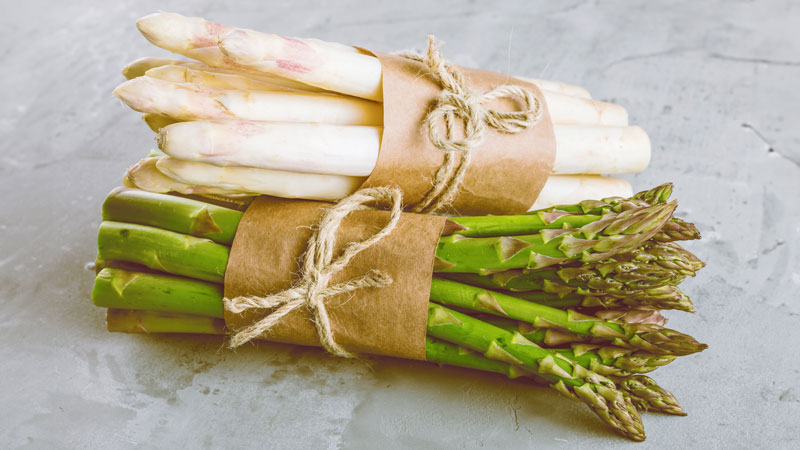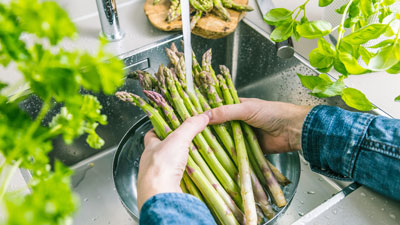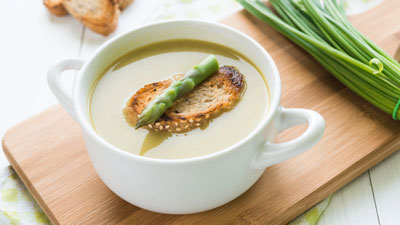
Asparagus is a delicious and very popular stem vegetable. There are two types, green and white. Both colors are a good source of thiamin, riboflavin, vitamin C, vitamin E, copper, and selenium. But they are particularly rich in folate and vitamin K. Just one cup, cooked, can give an adult from 70% to over 100% of the vitamin K we need. And it can give a pregnant woman up to 40% of the folate she and her baby need.
Some sites mistakenly categorize asparagus as a cruciferous vegetable, but it isn’t. It’s still packed with healthy phytonutrients, though, including flavonoids and phenols, particularly in their green form.
There are many health benefits we can get from this vegetable. It supports our bones, our heart, our brain, our red blood cells, our muscles, our reproduction, our little ones’ early development, our eyes, our immunity, and more!
Check out our personalized calculator below to see how much nutrition you or your loved ones can get with one portion. Plus, learn some trick to store and prepare them, and learn some fascinating facts!
Asparagus Nutrition Calculator
Use our personalized nutrition calculator to discover the percentage of daily nutrition needs you and your family can get from eating asparagus.
Nutrition needs vary according to age, sex, and whether women of reproductive age are pregnant or breastfeeding. Fill out the form below for yourself and for your family members to get personalized results.*
* Calculated as a percentage of the Recommended Daily Allowances (RDAs) as established by the U.S. Department of Agriculture and the U.S. Department of Health and Human Services. Based on asparagus nutritional information provided by the U.S. Department of Agriculture.
Tips to Select and Prepare Asparagus
Organic or Not?

Good news! Asparagus placed number 7 on The Clean 15 list provided by the Environmental Working Group (EWG). This means that you can skip the more expensive organic choice and buy conventional instead.
How to Store and Clean

Keep your asparagus in the fridge for up to five days. When you’re ready to eat it, make sure you rinse the stems well first. One way to do it is to put them in a large colander and place them under running water.
Cut, Snap, or Leave Alone?

If you’re comfortable chewing the fibrous ends, you can keep them. Most people aren’t, though, particularly children. If that’s the case, cut about two inches off your full stack with a knife, or bend each spear to let it snap at the exact right place on its own. This is an easy and fun method to try with kids at home!
Saute and Enjoy!

An easy way to cook your asparagus is to saute them with garlic and seasonings. You don’t need to use oil. Instead, try using some water or vegetable broth. You can cover the pan at first so the steam helps cook them faster.
Too thick? Try Blanching First

If your spears are too thick, you might want to try blanching them first for up to 3 minutes before sauteing to accelerate the process. You can also boil them for up to 5 minutes and sprinkle some lemon juice and seasonings on them, once cooked.
Make an Asparagus Soup!

Start by dry-sauteing 1 chopped onion and 4 carrots. Add a bit of water to deglaze your pan. Then add 2-4 chopped garlic cloves and 1/2 Tbs Italian seasoning. Cook for a minute and add 2 c chopped asparagus, 4 c veggie broth, 2 c plant-milk, 1 c ground oats and 1/2 c ground cashews. Add salt and pepper to taste. Cook for 7 minutes.




